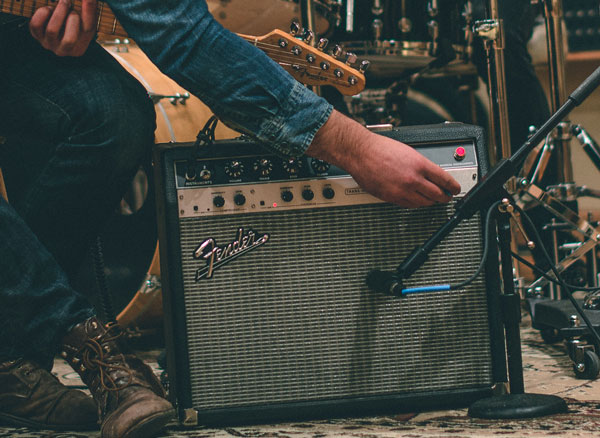I’d be willing to wager that more ink in guitar magazines, and virtual ink in guitar forums, is devoted to “How can I sound like:_____?” threads than anything else. I, for one, have gotten a lot of work out of writing on the subject.
While there’s nothing wrong with trying to cop the tones of great players past and present, how about concentrating on the gear you’ve got? Or finding something new that inspires you, regardless of its cost or artist associations, and playing the hell out of it to craft a voice of your own? With a little work, you might just surprise yourself with how good you can sound.
Your Signature Tone and Style
Every one of those distinctive-tone legends gained their fame by sounding like themselves, rather than by copying someone who had come before. Ironically, many them soon became the focus of copyists, so the plethora of like-sounding players meant they weren’t unique anymore.
Great chops have a little something to do with it, of course, but consider any of those players you can name by first few bars. From Hank Marvin to Jimi Hendrix, Mike Bloomfield to Brian May, Jeff Beck to Carlos Santana, Brian Setzer to Billy Gibbons, Mark Knopfler to Toni Iommi, each made their living on the individuality of their tone. Frequently you know who’s playing from just the first few notes, and no one else sounds quite like that, other than maybe the guy in the tribute band down the road. Raw technical skill aside, a distinct playing style is equally important in each of these cases, and I think most of us will agree that playing style and a signature tone tend to go hand-in-hand.
The Sonic Quest
Often this kind of sonic quest grows out of a desire to ape “established” tones, and that’s the place where most of us started. Occasionally, though, you encounter a musician who jumps into this kind of artistry early in their playing career. Interestingly, I’ve heard it in players who perhaps weren’t overly skilled in the technical sense, but who possessed boatloads of creative energy and a drive to craft something new. Then they applied this sensibility to alternative, indie, punk or avant-garde playing scenarios to make stunning music.
The quest can be frightening, of course. If you get a large part of your playing pleasure out of enjoying how close you have come to sounding like someone else, cutting that lifeline can be a little unsettling at first. And maybe you don’t want to sound different. That’s fine too. But if you’re hoping to forge a career out of playing, or a serious sideline even, crafting a signature sound and style is far more likely to get you consistently noticed than the ability to sound impressively similar to Jimmy Page, Stevie Ray Vaughan, Kirk Hammett or Dan Auerbach.
Thesis/Antithesis/Synthesis
The most obvious means of crafting a different sonic palette is to start with an established "great sound” that you can convincingly achieve with your gear, and then screw it up all to hell. Then bring it back from the edge of nasty to the point where it’s original, ear-catching and tasty.
The three step process might look like this:
- Thesis: Propose what you believe to be good.
- Antithesis: Dial in something interesting, but a world away.
- Synthesis: Find a place where the two meet, to sound different, but good.

Alternatively, you might skip the established "great sound” and try a slightly more meditative, mindful, even Zen-like approach. Sit peacefully beside your amp, guitar in lap, and try to empty your mind of all that you previously considered to be “your sound.” Turn all of the amp’s knobs down to zero, then power up, and play while — without looking at the knobs’ actual settings — you semi-randomly roll up different parameters until things start to sound interesting, without falling back on the settings that you previously had used.
There are as many ways to get there as there are combinations of amps, guitars and pedals. I suppose I’m just trying to emphasize that you don’t necessarily need to buy something new or different to start sounding like yourself, even if you pieced together your current rig to sound like someone else.
Nasty vs. Nice
Even a tone that might not be considered aurally pleasing in a general, mass-audience rock setting can bear impressive stylistic fruit when used to front some exciting, original and attitude-fuelled playing.
Think of the frenzy surrounding the raw, gnarly sounds of players like Jack White, Dan Auerbach or even Gary Clark Jr. These aren’t your sweet, rich, singing Robben Ford, Eric Johnson or Carlos Santana tones, and they sure do stand out from the crowd as a result.
